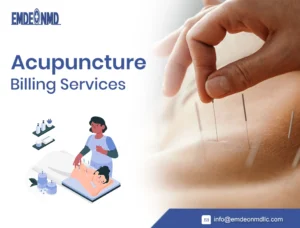Dermatology is a unique healthcare field, blending art and science for treating skin care conditions like acne to melanoma. However, the medical billing and coding in dermatology can be just as complex as the domain itself. Regardless of the fact that you are an expert or just a newbie entering into the field of healthcare, this blog will help understand the process and provide valuable information regarding dermatology billing and coding workflow.
Table of Contents
How Dermatology Billing and Coding Differs from the Rest
Dermatology being unique among other medical specialties, covers a wide range of procedures from routine consultation to detailed surgical procedures. Specific codes, guidelines, and documentation are required for each type of service. To ensure timely reimbursements and compliance, the use of accurate modifiers to indicate the scope and nature of procedures is necessary for Dermatology coding services.
An expert team of professionals must have a basic understanding of skin-related diseases or diagnoses with expertise in evaluating low, moderate, and complex scenarios as well as the length, depth, width, and circumference of benign and cancerous lesions.

Dermatology medical billing can be categorized into two sub-domains e.g., cosmetic dermatology and medical dermatology.
| Aspect | Cosmetic Dermatology | Medical Dermatology |
| Definition | Related to improved appearance | It is about diagnosing and treating skin diseases. |
| Examples | Botox, chemical peels, laser treatments. | Treating acne, eczema, psoriasis, skin infections. |
| Cost | Paid out-of-pocket | Costs are partly or fully covered by insurance. |
So, knowing the differences between above two, medical coders need to evaluate the situation thoroughly what kind of procedure was done and whether it was medically necessary or not. Moreover, stay up-to-date with the patient’s insurance policy in this regard.
For instance, multiple lesions are removed by a dermatologist in a single visit. The correct sequence of codes for procedures done is all about accurate coding. The use of modifiers like “59” to distinguish different procedures and complete documentation justifies the claim.
Common Codes and Their Applications
It is important to understand the most commonly used CPT, ICD-10, and HCPCS codes.
1. CPT Codes for dermatology:
- 11400-11446: For benign lesion excision
- 17000-17004: For destruction of premalignant lesions
- 17311-17315: For Mohs surgery procedures
2. Dermatology ICD-10 code:
- L70.0: Acne vulgaris
- C43.51: Malignant melanoma of skin of the trunk
- L40.0: Psoriasis vulgaris
3. HCPCS Codes:
- J3301: Injection, triamcinolone acetonide, per 10 mg
- J0585: Botulinum toxin for hyperhidrosis treatment
Learning these codes is a first step whereas keeping up with changes, such as annual updates to CPT codes, is important to resolve dermatology billing challenges.

Practical Advice to Streamline Dermatology Billing
1. Invest in Training and Certification
Try to invest in specialized training of the staff members at regular intervals. Maintaining Dermatology billing compliance will protect from legal and financial risks. Obtaining certifications such as the Certified Dermatology Coder (CDC) will ensure that you are well-equipped to handle the challenges of dermatology claims..
2. Keep Documentation Detailed and Clear
Clear documentation is necessary to avoid claim denial. Do consider the following factors
- The exact location and size of the lesions
- The kind of procedure done
- The basis for every treatment selection
For example: A cryotherapy for a wart was done by a dermatologist on the patient’s hand. The documentation must state that cryotherapy was chosen as topical treatment was resistant. It will help to justify the treatment and prevent any denials.
3. Use Technology to Your Advantage
The use of specialized billing and coding software in dermatology can reduce the chances of errors while saving time. These software offer code verification and the ability to submit claims electronically tools can assist by highlighting potential coding errors before submission of the claims.
The billing team at a dermatology clinic uses coding software with integrated AI for managing claims. While entering a skin biopsy claim, the AI system will identify an error in the code entered. The AI cross-checks the code with the clinic’s database and recommends the correct one. A quick amendment will be made by the team member and precise claim submission will be done.
4. Check Insurance Compatibility
One of the crucial steps in handling claims is to verify the insurance services of the patients. Either the services availed by the patient are covered under insurance or the healthcare provider is in the insurance network of the patient. By staying informed about Dermatology billing and coding guidelines, staff members can reduce the risk of claim denials.
5. Timely Submission of claims:
Delaying claim submission even by a single day can result in denial. It will take away all of your energy to recover the lost revenue. Implementing tools that give reminders and automatically send claims on given deadlines can save you headaches down the road.
The Role of EmdeonMD in Simplifying Dermatology Billing
EMDEON is a reliable partner for Dermatology billing solutions as it offers a dedicated and human-centered approach. With a skilled team of professionals, EMDEON is committed to Dermatology coding best practices and helps generate faster reimbursements.
Summary:
With a combination of technical knowledge, attention to detail, and continuous learning along with practical tools and strategies, one can master the art of dermatology billing. Complexities of dermatology billing can be handled by staying informed, implementing technology, and building accuracy in practice. Using a blend of AI-integrated tools and human creativity, the EmdeonMD team of billing experts can overcome the challenges of dermatology billing with precision and accuracy.
FAQs:
Q1: What are the most common challenges in dermatology billing and coding?
One of the major challenges is to identify whether the procedure is cosmetic or medically necessary, the complexity of codes, and the correct use of modifiers.
Q2: How can I stay updated with changes in dermatology coding?
Invest in training and attend coding-relevant workshops.
Q3: Why is modifier “-59” so important in dermatology billing?
Modifier “-59” helps to distinguish different procedures done in a single session
Q4: How do I differentiate between medical and cosmetic dermatology services?
Medical services focus on treating a disease or a medical condition while cosmetic services are related to the appearance of skin.
Q5: What certifications are valuable for dermatology medical coders?
Obtaining certifications such as Certified Dermatology Coder (CDC) will enhance skills to overcome challenges in dermatology billing and coding.
Q6: What role does documentation play in dermatology billing?
Clear documentation is essential for precise coding and for streamlining the dermatology revenue cycle management.












